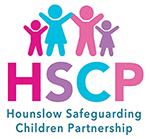Online Safety
The internet is an integral part of children and young people’s lives; a multitude of devices provide access to a wide range of information, opportunities for instant communication and social networking. This can offer an opportunity for inclusivity, creativity and exploration of different roles and identities.
The internet can benefit children and young peoples’ education and social development, but it can also present many risks. It is important that children and young people are empowered to protect themselves from risks they may encounter and are able to safely manage their lives online as well as offline. Children, young people and families are often unaware that they are as much at risk online as they are in the real world, and may not be aware of the actions they can take to protect themselves. The educational and social benefits of the internet should be promoted, but that this should be balanced against the need to safeguard children.
HSCP eSafety Statement
The Hounslow Safeguarding Children’s Partnership has developed a statement setting out the aims and objectives of its response to eSafety. This statement also seeks to identify key principles under which work around eSafety should be undertaken and identifies key priority areas of work in order to improve our collective response to eSafety.
We recognise that an effective approach to online safety empowers children, young people and their families to stay safe online. It also empowers those who work with them to protect, educate and establish mechanisms to identify, intervene in and escalate any incident where appropriate.
This statement has been developed in conjunction with universal and early intervention services and multi-agency partners working with children, young people and their families within Hounslow.
This statement should not be viewed in isolation and should be considered alongside other key documents including early help policies and procedures:
- the Keeping Children Safe in Education;
- Hounslow Thresholds Guidance Assessment Protocol – 2021
- Child and Family Assessment Notification (CFAN).
Staff who work with children have a role in implementing this guidance by helping the children and young people they work with to keep themselves safe on-line and dealing with safeguarding issues arising from e-safety incidents.
This document is intended to be read and endorsed by:
- All education institutions (maintained, independent, support, colleges, free schools, academies)
- All venues where young people have access to technology (eg: youth centres, libraries)
- All constituents of the Hounslow Local Safeguarding Children Partnership (HSCP)
- Parents and community groups
Download the HSCP eSafety Statement 2017 – 2019 here
Information and Resources
National Crime Agency (NCA) issues urgent warning about ‘sextortion’ (click for full details, including a link to the alert, sent to schools)
The National Crime Agency has issued an alert to hundreds of thousands of education professionals following a considerable increase in global cases of financially motivated sexual extortion – a type of online blackmail widely known as ‘sextortion’.
Sextortion involves people being forced into paying money or meeting another financial demand, after an offender has threatened to release nude or semi-nude photos of them. This could be a real photo taken by the victim, or a fake image created of them by the offender.
——————————————————————————————————————-
CEOP Safety Centre – the Child Exploitation and Online Protection Centre (CEOP) is part of the UK’s National Crime Agency. It aims to keep children and young people safe from sexual abuse and grooming online. Parents, carers, and children can report concerns about child sexual abuse or online exploitation to the CEOP Safety Centre.
——————————————————————————————————————-
Report Remove | Childline – resource that supports removing nudes of children online
——————————————————————————————————————-
Keeping children safe online | NSPCC – NSPCC resources for care givers and professionals
——————————————————————————————————————-
About us: Helping parents keep children safe online | Internet Matters – resources for care givers and professionals

